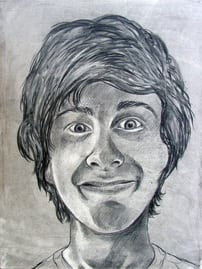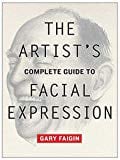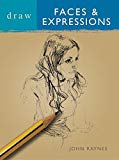Contents
Tutorial on Drawing Facial Expressions
If you’re planning on working on comic book art, character design is one of the most important aspects of creating quality work. What really separate regular characters from unique ones are their facial expressions. You must learn to draw facial expressions if you want to develop your characters and make the reader get invested.
Aside from character development, drawing facial expressions allows the readers to understand what is going on in the particular scene. It also lets people know the reactions the characters are making as well as the emotions that they are feeling. Aside from wards, you can draw facial expressions to show what the characters are thinking.
So let’s get into how to draw facial expressions according to the emotions that you are trying to convey.
Anger
This is one of the easiest facial expressions that you can draw, mainly because it is pretty straightforward what it is that you want to show. The first step is to start at the eyes. You want to make sure that the eyes are angled downward and show a line below the eyes to show the emotions.
Along with the eyes, the eyebrows should be curved inwards to add to the ferocity of the eyes. Then from the nose, you want to show that it is flared out slightly and the nasolabial folds to show to indicate that the characters is putting strain around the area.
Finally, you can show the character gritting his or her teeth to finish it off. Another way to draw the mouth is to make the bottom lip longer and show that the character is biting the lower part of the lip.
Fear
Fear is a facial expression that is harder to convey than anger. The most important part of showing a character is in fear is to focus on the eyes. You want the eyes to appear wide to show slight surprise. You should also make it seem like the character is making a blank stare.
The brows should be only slightly curved inwards to show slight worry. The mouth has to be drawn open as if in shock. The cheek should work with the mouth to show that the character’s mouth is open. It should be slightly drawn back and frozen in place.
Happiness
Happiness is also a very easy emotion to show. Start at the eyes and draw it normally but slightly more relaxed. The brows should also be relaxed since there is no sadness or worry that the character is feeling.
You can play around with the mouth to create different ways of showing happiness. It can be anything from a simple smile, slight grin, and a full smile. The cheeks should push upwards as that is what happens when a normal person smiles.
Laughter
Laughter is one of the more intense emotions that you can draw. To start, the eyes are more closed and narrower in the outer corners. The eyes can be fully closed or slightly closed depending on the intensity of the laughter. The brows are what will bring everything together.
When it comes to the brows, you want to make sure that sure that they are curved inwards to convey a joyful expression. The forehead can show a crease on the top depending on the intensity of the expression. You can then work on the cheeks by lifting them. As for the mouth, you can part it slightly or make it wider. It’s really up to you how intense you want the laugh to be so you can really play around with the expressions.
Worried
The worried look is primarily achieved by focusing on the eyes. You want to make the eyes look like it is showing sympathy. You want the top of the eyes to look sad but not too sad by drawing them slightly closed. The bottom of the eyes should be very slightly upward.
As for the mouth, you want it to be a slight frown and draw it slightly parted. This will complete the expression of the worried look. The worried look is very similar to the sad expression but is different mainly in the eyes. Sadness also can be more shown through a bigger frown so the difference is in the mouth.
Surprised
Surprise is similar to fear. The eyes are pretty much drawn the same way as you would draw a character showing fear. However, the eyes should be wider and pupils smaller. The eyebrows should be curled upwards and you can show forehead creases to show the lift in the eyes.
The mouth should be sort of like an upside down U shape. You can also make the surprise more subtle my slightly parting the mouth. As for the cheeks, you shouldn’t really touch it as when you see an expression of somebody surprised, the jaws are relaxed and do not pull on the cheek bones.
So that is how you draw facial expressions for characters in comics. Drawing facial expressions does take a lot of practice. The best way to get good at drawing expressions is to focus on one expression at a time until you feel that you’ve gotten it down.
Again, the key to bringing your characters alive and also helping the reader understand the scene is to show it through facial expressions. The artist will be able to convey the emotion and the situation by doing this. It will also develop the character and make readers make an investment into the center of the story.
Recommended Books
The Artist’s Complete Guide to Facial Expression by Gary Faigin
This book contains detailed information on how to draw all the structures of the face and helps the reader to develop the ability not just to draw various facial expressions, but to understand the physiological occurrences that create different expressions. As any student of life drawing or anatomy knows, it’s good to know what the engine underneath the hood is doing to get the exterior right!
This book is a valuable addition to my collection of illustration books and I would recommend it to any illustrator, would-be illustrator, or casual artist who wants to develop her or his skills.
Draw Faces & Expressions by John Raynes
These instructional drawing books have a highly visual and practical approach. With the aid of step-by-step drawings, the authors – all professional artists or teachers – explain clearly and concisely how to use pencil, pen and ink, Conté and charcoal.
The series covers a comprehensive range of popular subjects and each title contains sections on materials, composition, perspective and different drawing techinques – both traditional and innovative.
Submit your review | |



